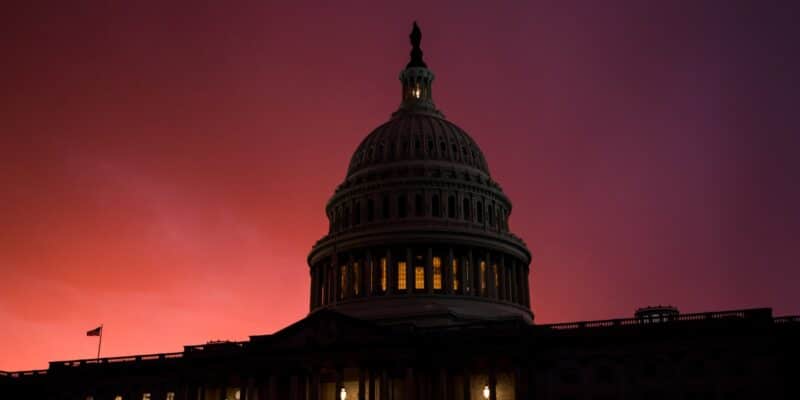
So, How Has Kamala’s Tax Plan Worked Out In The Past?
Kamala Harris put out her economic program two weeks ago, and the legacy corporate media has already largely forgotten about the only honest bit of policy she’s offered as we head into the Labor Day weekend.
But while the propaganda press is willing to ignore the old-school socialism she’s pushing, here we are not.
Therefore, please excuse the length of this post – but feel free to use it as a reference for future discussions. Because Kamala’s economic program has been tried in the past.
It’s been weighed, it’s been measured, and it’s been found wanting.
So here is a breakdown of Kamala’s economic policies incorporating historical comparisons from various countries, exploring the effects of similar policies, and examining the actions taken by those countries to prevent capital flight and manage their capital accounts.
LIFT the Middle-Class Act (2018)
Policy Statement: In October 2018, Kamala Harris introduced the Livable Incomes for Families Act.
Today (LIFT) the Middle-Class Act. This proposal aimed to provide substantial tax relief to low-and middle-income families by offering a refundable tax credit. Specifically, it proposed a refundable tax credit of up to $3,000 per individual or $6,000 for married couples, with the credit phasing out at income levels above $30,000 for individuals and $60,000 for couples.
The Act sought to directly address rising living costs and the growing income inequality.
Economic Impact:
Microeconomic Perspective: The refundable tax credit could increase disposable income for millions of households, raising their demand for goods and services.
However, the phase-out structure acts as an implicit tax on earnings above the
threshold, which could discourage additional work or taking higher-paying jobs. This effect is similar to the “income effect” in labor economics, where increased income from the credit might reduce the incentive to work longer hours, thereby reducing overall labor supply. Empirically, this could lead to a reduction in full-time equivalent jobs, as suggested by the Tax Foundation, which estimated a potential loss of around 825,000 jobs due to these altered work incentives.
Macroeconomic Perspective: The significant reduction in federal revenue—estimated at $2.7 trillion over a decade—could exacerbate the federal budget deficit. Historical examples, such as the Reagan tax cuts in the 1980s, illustrate how large-scale tax cuts without corresponding spending reductions can lead to increased national debt. This, in turn, could lead to higher interest rates as the government borrows more to finance the deficit, crowding out private investment and potentially slowing economic growth over the long term.
- Monetary Theory: The increase in disposable income could drive up consumption, potentially leading to demand-pull inflation if the economy is near full capacity. Without corresponding tightening of monetary policy, this could put upward pressure on prices, similar to the inflationary periods seen in the U.S. during the late 1970s and early 1980s when demand outpaced supply.
Historical Comparison:
Soviet Union Experience: In the Soviet Union, various forms of income redistribution were implemented through state subsidies and controlled prices. These policies often led to severe market distortions, creating disincentives for productivity and labor participation. The result was a stagnant economy plagued by inefficiencies and persistent shortages, illustrating the potential risks of large-scale income redistribution policies without careful management of economic incentives and market signals.
United Kingdom (1970s): The UK implemented significant income redistribution policies under the Labour governments of the 1970s, including wage controls and high taxation.
These measures led to a reduction in labor productivity, high inflation, and a balance-of-payments crisis. The resulting economic turmoil, known as “stagflation,” was characterized by high unemployment and stagnant growth, demonstrating the risks of aggressive income redistribution without corresponding economic reforms.
Child Tax Credit Expansion (2021)
Policy Statement: In 2021, Kamala Harris supported the expansion of the Child Tax Credit as part of the American Rescue Plan, which increased the credit to $3,000 per child aged 6 to 17 and $3,600 for children under 6, with half of the credit provided through monthly payments.
This policy was designed to provide immediate financial relief during the COVID-19 pandemic and to reduce child poverty.
Economic Impact:
Microeconomic Perspective: The expanded Child Tax Credit would directly increase household income, particularly for low- and middle-income families, leading to higher consumption. However, the marginal reduction in work incentives could be significant, particularly for those close to the phase-out thresholds. For example, studies on similar welfare programs have shown that when benefits decrease as income increases, beneficiaries may choose to work less to avoid losing the benefit, leading to a reduction in overall labor force participation.
Macroeconomic Perspective: The policy had a strong short-term impact by boosting aggregate demand during a period of economic uncertainty, which helped mitigate the economic downturn caused by the pandemic. However, the temporary nature of the expansion limited its long-term economic effects. When the credit expired at the end of 2021, there was a sharp increase in child poverty, illustrating the dependency that such benefits can create and the potential negative impact when they are withdrawn.
- Monetary Theory: The temporary increase in disposable income could have contributed to short-term inflationary pressures, especially in sectors like retail and housing, where demand quickly outpaced supply during the pandemic. This scenario aligns with the economic theory that sudden increases in demand, unaccompanied by equivalent supply-side responses, can lead to price increases.
Historical Comparison:
- Soviet Union Experience: The Soviet government provided extensive subsidies for families, including housing and childcare. While these policies initially boosted birth rates and supported family welfare, they ultimately led to inefficiencies and dependency on state support. The economy struggled to sustain these subsidies, leading to widespread shortages and poor-quality services. This mirrors the challenges of sustaining expanded social benefits like the Child Tax Credit, particularly when economic conditions change or fiscal pressures mount.
- Scandinavia (Norway and Sweden): These countries have implemented extensive child and family benefits as part of their welfare states. However, they have managed to sustain these benefits through high levels of taxation and a strong commitment to maintaining economic productivity and competitiveness. This contrasts with the challenges faced by less economically robust systems, highlighting the importance of balancing social welfare with economic sustainability.
Economic Agenda for the 2024 Presidential Campaign
Policy Statement: Kamala Harris’s 2024 economic platform includes a federal ban on grocery price gouging, expanded down-payment assistance for first-time homebuyers, and providing $6,000 per child during the first year of life. These proposals aim to address inflation, housing affordability, and support for working families.
Federal Ban on Grocery Price Gouging
Policy Statement: Harris proposes federal measures to curb grocery price increases by empowering the FTC to fine grocery chains that engage in excessive pricing.
Economic Impact:
Microeconomic Perspective: Price controls on groceries could lead to shortages if retailers reduce supply in response to capped prices, as seen historically invarious contexts. For example, during World War II, price controls in the U.S. led to black markets and rationing as producers could not cover their costs under the regulated prices, reducing the availability of goods for consumers.
Macroeconomic Perspective: Such measures might provide short-term relief to consumers but could discourage investment in the grocery sector, leading to long-term inefficiencies and reduced supply. Similar policies in the Soviet Union led to chronic shortages of basic goods, as price controls removed the incentive for producers to maintain or increase supply.
Historical Comparison:
Soviet Union Experience: The Soviet government frequently used price controls to manage the cost of basic goods. This led to widespread shortages and the creation of black markets where goods were sold at much higher prices. The inefficiencies created by these controls significantly hampered the Soviet economy, leading to low productivity and chronic shortages.
Argentina (2000s): Argentina implemented strict price controls on essential goods during the economic crisis of the early 2000s. While these measures were intended to protect consumers, they led to shortages, hoarding, and the emergence of black markets, exacerbating the economic difficulties the country faced. The Argentine experience underscores the risks of using price controls as a tool for managing inflation without addressing the underlying economic issues.
Expanded Down-Payment Assistance
Policy Statement: Harris proposes a $25,000 subsidy for first-time homebuyers and a $40 billion fund for local housing solutions, aiming to address the housing affordability crisis.
Economic Impact:
Microeconomic Perspective: The subsidy would likely increase demand for housing, driving up prices, particularly in already constrained markets. The effect would be similar to what was observed with the first-time homebuyer tax credits implemented after the 2008 financial crisis, which temporarily boosted home sales but also contributed to higher prices, making housing less affordable for those not receiving the subsidy.
Macroeconomic Perspective: The policy might stimulate construction and short-term economic growth, but the long-term effect could be higher interest rates as the government increases borrowing to finance these subsidies. Higher rates could crowd out private investment, slowing broader economic growth over time.
Historical Comparison:
Soviet Union Experience: The Soviet Union provided state-subsidized housing as a way to control urban development and ensure affordable housing. However, the lack of market signals led to poor-quality construction and widespread inefficiencies in housing allocation. Over time, the state’s inability to meet demand resulted in severe housing shortages and long waiting lists for apartments.
United States (Post-World War II): The GI Bill provided subsidies for returning veterans to purchase homes, which helped drive a post-war housing boom. However, the rapid increase in demand led to significant increases in home prices, especially in urban areas, creating affordability challenges for those not eligible for the benefits. This highlights the need for careful management of housing subsidies to avoid unintended consequences on the broader market.
$6,000 per Child for the First Year
Policy Statement: Harris proposes providing families with $6,000 per child during the first year to offer immediate financial relief to new parents.
Economic Impact:
Microeconomic Perspective: This measure could significantly increase disposable income for new parents, leading to higher spending on childcare and related services. However, like other income-based subsidies, it might reduce work incentives if recipients decide to reduce their labor supply to maximize their benefit.
Macroeconomic Perspective: The increase in short-term consumption could provide a stimulus to the economy, but if funded through increased borrowing, it could lead to higher deficits and long-term economic challenges similar to those faced by other expansive welfare programs.
Historical Comparison:
Soviet Union Experience: The Soviet Union’s family support policies aimed to boost birth rates and support working mothers. While these measures initially increased birth rates, the lack of adequate economic infrastructure and the inefficiency of the centrally planned economy meant that the long-term benefits were limited, and the policies eventually became unsustainable.
France (1980s-1990s): France implemented a series of family support policies aimed at increasing birth rates and supporting families, including cash benefits and tax incentives. While these policies succeeded in boosting birth rates and reducing child poverty, they also placed significant strain on the public finances, leading to debates about the sustainability of such extensive welfare programs.
Healthcare and Medical Debt Relief (2024)
Policy Statement: As part of her 2024 presidential campaign, Kamala Harris emphasizes healthcare reform, including extending caps on insulin prices and canceling medical debt.
Extending the Cap on Insulin Prices and Prescription Drug Costs:
Policy Statement: Harris proposes extending existing caps on insulin prices and out-of-pocket prescription drug costs to all Americans.
Economic Impact:
Macroeconomic Perspective: Price caps on prescription drugs could make essential medications more affordable in the short term. However, they could also reduce profitability in the pharmaceutical industry, leading to decreased investment in research and development. Historical examples include the price controls in the Soviet Union, which led to a decline in the availability and quality of medicines. Over time, this could lead to shortages and a decline in innovation, similar to the challenges faced by the Soviet healthcare system, which was characterized by outdated technologies and limited availability of modern medicines.
Historical Comparison:
Soviet Union Experience: The Soviet Union implemented price controls on essential goods, including medicines, to make them affordable for the population. However, these controls led to chronic shortages, a decline in the quality of available medicines, and a lack of innovation. The Soviet healthcare system, while theoretically providing universal access, was plagued by inefficiencies and inadequate resources, leading to poor health outcomes.
Venezuela (2000s-2010s): Venezuela’s government implemented price controls on a wide range of goods, including medicines, as part of its socialist policies. These controls led to severe shortages, black markets, and a collapse in the availability of essential medications. The Venezuelan experience underscores the risks of relying on price controls without addressing underlying economic issues.
Advertisement
Medical Debt Cancellation
Policy Statement: Harris advocates for the cancellation of medical debt through federal programs, recognizing that medical expenses are a leading cause of financial distress in the U.S.
Economic Impact:
Monetary Theory: Canceling medical debt could provide immediate financial relief to millions of Americans, increasing disposable income and boosting consumer spending. However, if not carefully managed, this could lead to higher federal deficits, similar to the impact of debt relief programs in other contexts, such as during the post-World War II period when large-scale debt cancellation led to short-term economic boosts but also long-term inflationary pressures.
Historical Comparison:
Soviet Union Experience: The Soviet Union’s approach to healthcare was state-funded and focused on providing universal access. However, the system suffered from chronic underfunding, leading to poor-quality care and significant inefficiencies. The emphasis on providing services without sufficient financial backing led to systemic decline, illustrating the potential risks of widespread debt cancellation without a corresponding plan to manage long-term financial sustainability.
Greece (2010s): During the European debt crisis, Greece implemented a series of debt relief measures, including write-offs for private debts. While these measures provided short-term relief, they also contributed to the overall instability of the Greek economy, leading to a prolonged recession and significant challenges in managing public finances. The Greek experience highlights the importance of balancing debt relief with sustainable economic policies.
Corporate Crackdowns and Economic Reforms (2024)
Policy Statement: Kamala Harris proposes measures to crack down on corporate practices that contribute to economic inequality, including stricter regulations on corporate landlords and grocery chains, and raising the corporate tax rate to 28%.
Stricter Regulations on Corporate Landlords and Grocery Chains:
Policy Statement: Harris proposes stricter regulations to curb rent increases by corporate landlords and prevent price gouging by grocery chains.
Economic Impact:
Microeconomic Perspective: Increased regulation on corporate landlords could lead to reduced investment in rental properties, potentially exacerbating housing shortages. Empirical studies on rent control in cities like New York and San Francisco have shown that such policies can lead to reduced availability of rental units and deterioration in the quality of housing, as landlords have less incentive to maintain properties or build new ones.
Macroeconomic Perspective: These regulations might reduce short-term cost burdens on consumers but could also stifle investment in affected sectors. Overtime, this could lead to inefficiencies similar to those seen in the Soviet Union, where strict state control over production and pricing led to chronic shortages and low-quality goods and services.
Historical Comparison:
Soviet Union Experience: The Soviet Union’s strict regulation of private enterprises and heavy-handed control over production and pricing led to inefficiencies, low-quality goods, and a lack of consumer choice. These controls stifled innovation and led to chronic shortages and a lack of basic goods, contributing to the overall stagnation of the Soviet economy.
Germany (Post-World War II): In the aftermath of World War II, Germany implemented strict price controls and rent regulations as part of its reconstruction efforts. While these controls were intended to stabilize the economy and prevent inflation, they ultimately led to shortages and a thriving black market. It wasn’t until the economic reforms of the late 1940s, which included lifting price controls and rent regulations, that Germany experienced rapid economic growth and the “Wirtschaftswunder” (economic miracle).
Raising the Corporate Tax Rate to 28%
Policy Statement: Harris proposes raising thecorporate tax rate from 21% to 28% to fund her economic initiatives.
Economic Impact:
Macroeconomic Perspective: Higher corporate taxes could reduce after-tax profits, leading to lower investment in capital and potentially slower economic growth. This outcome was observed in the Soviet Union, where heavy state control over profits led to low levels of investment in productivity-enhancing technologies and overall economic stagnation. Similarly, empirical studies in Western economies have shown that higher corporate taxes can reduce the rate of return on investment, leading to lower capital formation and slower long-term growth.
Historical Comparison:
Soviet Union Experience: The Soviet Union’s heavy regulation of corporate activities and high levels of state control over profits led to widespread inefficiencies and economic decline. The lack of incentives for innovation and investment stifled economic growth, leading to a stagnant economy that struggled to compete on a global scale.
United Kingdom (1960s-1970s): The UK experienced similar challenges when corporate tax rates were significantly higher during the post-war period. High taxation and state control led to low levels of corporate investment, stagnation in productivity, and a decline in global competitiveness. The UK’s economic difficulties during this period highlight the risks of excessive corporate taxation without fostering a supportive environment for investment and innovation.
Vision for Middle-Class Economic Stability
Policy Statement: Kamala Harris’s economic vision focuses on strengthening the middle class by providing economic stability, security, and dignity through various policy measures.
Economic Impact:
Microeconomic and Macroeconomic Perspectives: Harris’s policies, aimed at boosting the middle class, could improve consumer welfare and reduce inequality in the short term. However, if these policies are financed through increased borrowing, they could lead to higher interest rates and crowd out private investment, slowing long-term economic growth. Similar outcomes were observed in the U.S. during the 1970s, when expansive fiscal policies led to higher deficits, contributing to stagflation—a period of high inflation combined with stagnant economic growth.
Historical Comparison:
Soviet Union Experience: The Soviet Union’s efforts to promote economic stability through state-driven policies often led to inefficiencies and a lack of innovation. The focus on maintaining stability without fostering a competitive market environment contributed to the stagnation and eventual collapse of the Soviet economy. The challenges faced by the Soviet Union highlight the risks of pursuing economic stability without sufficient attention to market dynamics and innovation.
Brazil (1980s): Brazil implemented a series of state-driven economic policies aimed at stabilizing the middle class and promoting growth. However, these policies led to hyperinflation, a massive increase in public debt, and a severe economic crisis in the late 1980s and early 1990s. The Brazilian experience underscores the importance of balancing social stability with sound fiscal and monetary policies to avoid long-term economic instability.
Taxing Unrealized Gains (Proposed Concept)
Policy Statement: Kamala Harris supports the concept of taxing unrealized gains, particularly targeting wealthy individuals who accumulate large amounts of wealth through appreciating investments.
Economic Impact:
Microeconomic Perspective: Taxing unrealized gains could distort investment decisions by incentivizing investors to hold less productive but more liquid assets to avoid high tax liabilities. This could reduce overall economic efficiency and lead to capital flight, where investors move their wealth to jurisdictions with more favorable tax treatment. Similar issues have been observed in countries with high wealth taxes, where capital outflows and reduced investment have negatively impacted economic growth.
Macroeconomic Perspective: The policy could lead to significant capital outflows, destabilizing financial markets and slowing economic growth. For instance, in France, the implementation of a wealth tax led to the exodus of many high-net-worth individuals, which in turn reduced the tax base and led to lower-than-expected revenue generation. This experience underscores the potential challenges of implementing a tax on unrealized gains in a globalized economy.
Historical Comparison:
Soviet Union Experience: The Soviet Union’s approach to wealth and income distribution involved heavy taxation and appropriation of private wealth by the state. This led to significant capital flight and a lack of investment in productive sectors, contributing to the overall economic decline. The taxation of wealth and assets without corresponding investment incentives can lead to similar issues, such as capital outflows and economic stagnation, as seen in both the Soviet experience and in modern examples like France.
France (1990s-2000s): France introduced a wealth tax in the 1990s aimed at reducing income inequality. However, the tax led to significant capital flight as wealthy individuals relocated to countries with more favorable tax regimes. This reduced the tax’s effectiveness in generating revenue and weakened the overall economy by reducing investment and slowing growth. France eventually reformed its wealth tax system, reducing its scope and lowering rates to stem capital outflows, highlighting the challenges of taxing wealth in an interconnected global economy.
Argentina (2000s-2010s): Argentina implemented various wealth taxes and capital controls during periods of economic crisis. These measures led to significant capital flight and a deterioration of the capital account, with investors moving assets abroad to avoid taxation. The Argentine government responded by tightening capital controls, but these measures further discouraged investment and exacerbated economic instability. The Argentine experience illustrates the difficulties of managing capital flight and maintaining economic stability in the face of aggressive wealth taxation.



